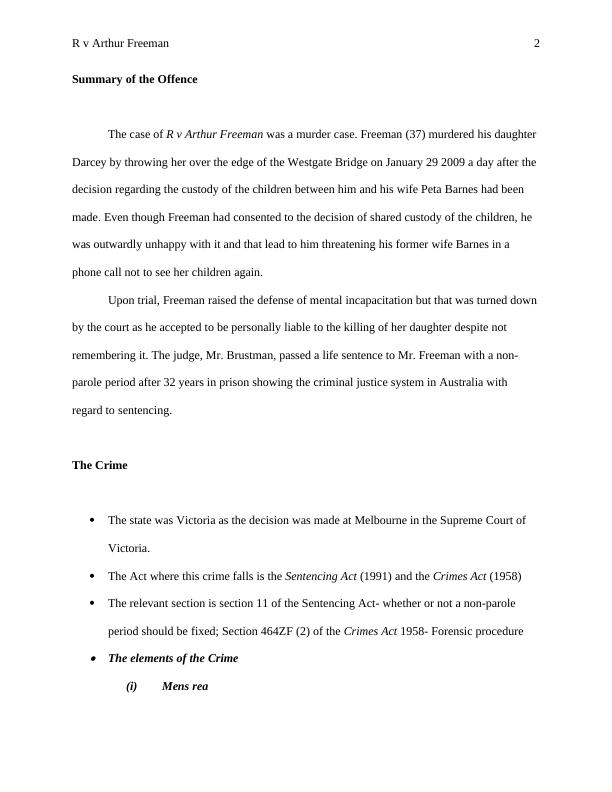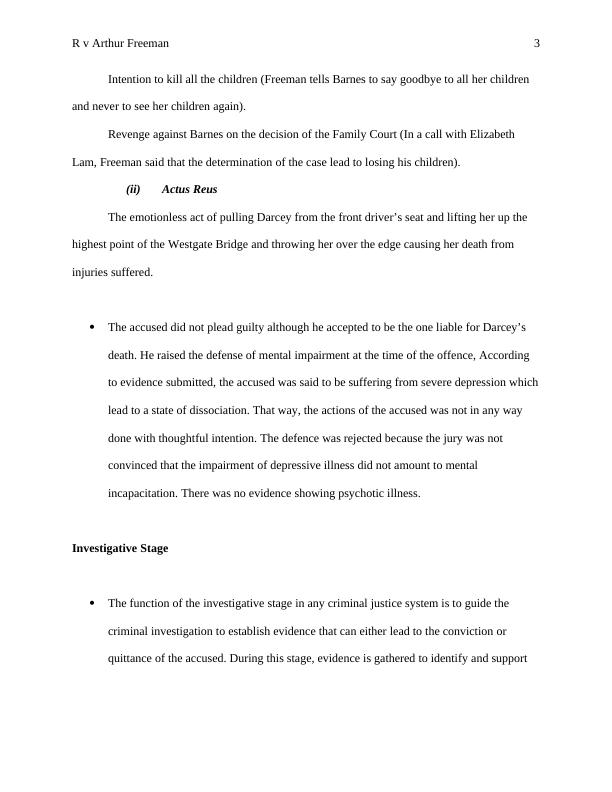The Case of R v Arthur Freeman
8 Pages1956 Words92 Views
Added on 2023-01-13
About This Document
The case of R v Arthur Freeman was a murder case where Freeman threw his daughter over the Westgate Bridge after a custody decision. This article provides details about the offense, the investigation, the trial, and the sentencing.
The Case of R v Arthur Freeman
Added on 2023-01-13
ShareRelated Documents
End of preview
Want to access all the pages? Upload your documents or become a member.
Criminal Law: Murder, Conspiracy, Burglary and Trespass
|5
|1097
|209
Principles of Criminal Law: Analysis and Evaluation
|6
|1349
|240
Individual culpability in joint criminal ventures
|4
|866
|223
Unit 50 Offender Management: Theories of Punishment, Government and Non-Government Organizations, and Sentence Plans
|9
|3814
|324
Application for Bail
|6
|1180
|52
Court Report of R V Vibert
|5
|1517
|73



